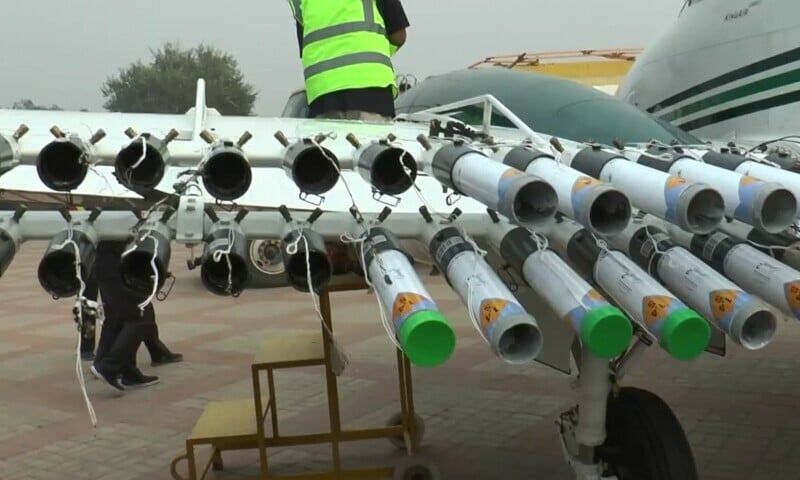LAHORE: Amid worsening smog conditions across various cities of Punjab and Khyber Pakhtunkhwa, the Punjab provincial government has decided to use artificial rain in Rawalpindi to alleviate hazardous pollution levels, local media reported while citing government officials.
Last year in December, Pakistan used artificial rain for the first time in the country to combat hazardous levels of smog in Lahore.
Officials said that the project will proceed if suitable cloud cover forms over the region, a requirement for the artificial rain process to be effective.
The provincial environmental and government agencies have dispatched teams to Rawalpindi to prepare for the trial to address severe air quality issues in major cities across the province, according to media reports.
Lahore, which ranked among the most polluted cities globally, is at the centre of the crisis, with other cities such as Multan also experiencing dangerously high smog levels. On Saturday, authorities closed portions of the motorway due to limited visibility caused by dense smog.
According to environmental authorities, toxic air from neighbouring India has compounded the air pollution in Lahore.
The toxic air from neighbouring India has engulfed various districts of Khyber Pakhtunkhwa (KP) after already blanketing Punjab.
Peshawar, the provincial capital of KP, has now become the most polluted city in the world, surpassing other major cities in the South Asian nation.
READ ALSO: Israel Pounds Gaza, Lebanon as Ceasefire Efforts Falter
According to a report by IQAir, which tracks real-time data of air quality worldwide, the air quality index (AQI) in Peshawar reached 718 around 7 pm on Sunday, making it the top-ranked city on the list of the most polluted urban centres globally.
At the same time, the concentration of PM2.5 pollutants—fine particulate matter that poses significant health risks—was recorded at 434 micrograms per cubic meter in Peshawar, which is more than 87 times higher than the World Health Organization’s (WHO) annual air quality guideline value.
The situation in Punjab has also been dire. In Multan, the AQI reached 497, while Lahore ranked third in the country with an AQI of 348, according to the Swiss air quality monitor. Other cities in Punjab like Bahawalpur, Faisalabad, and Sargodha also reported poor air quality.
According to IQAir, Pakistan is battling severe air pollution, with an annual Air Quality Index (AQI) of 160, more than 14.7 times the World Health Organization’s air quality guideline value.
Pakistan has the second worst air quality in the world after Bangladesh.
According to a report by IQAir, Pakistan’s cleanest city in 2023 was Abbottabad with AQI 97. AQI below 50 is considered healthy.
Millions of people die each year from air pollution-related health issues. UNICEF reports that nearly 600 million children in South Asia are exposed to dangerous levels of air pollution, with half of all childhood pneumonia deaths linked to it.
According to UNICEF, every year, air pollution is estimated to cause the deaths of 130,000 children under the age of 5 in South Asia.
According to the University of Chicago’s Energy Policy Institute report, compiled by the University of Chicago’s Energy Policy Institute, the poor air has shortened the lives of Lahore residents by 7.5 years.
Another report in Chicago says that fossil fuel-driven particulate air pollution cuts global average life expectancy by 1.8 years per person.

























